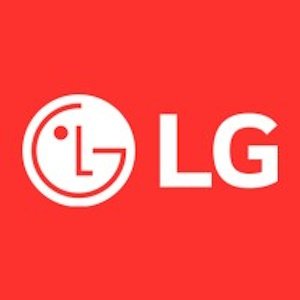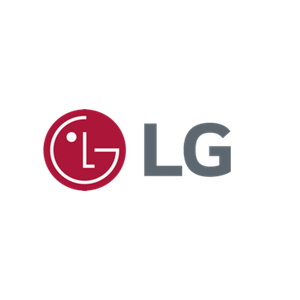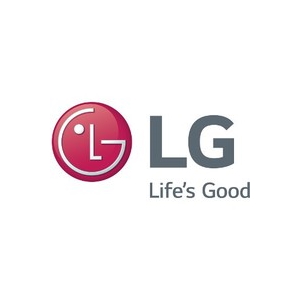LG Electronics USA Inc. - Experts & Thought Leaders
Latest LG Electronics USA Inc. news & announcements
mSupply, a major North American distributor of plumbing, appliance, HVAC, commercial kitchen and pool and spa repair parts, recently celebrated the opening of a combination branch location and regional distribution center in Denver, USA. Located at 9400 E. 46th Pl., Unit 100 in Denver, the facility features a unique mixed-use concept that includes both a Comfort Air Distribution branch and 200,000 square feet of warehouse space – roughly the size of four football fields. As an mSupply company, Comfort Air Distributing sells HVAC products and equipment to industry professionals in Colorado and portions of Wyoming. Since 1987, Comfort Air has been a trusted provider of top-notch brands, including Rheem, Honeywell and Aprilaire. regional distribution center The regional distribution center is stocked with thousands of repair parts for the HVAC, plumbing industries The regional distribution center, meanwhile, is stocked with thousands of repair parts for the HVAC, plumbing, appliance and commercial kitchen industries. It also offers locker pickup options for technicians who need after-hours access. They can order a part online, then pick it up – or leave a part for a return – before or after business hours in a secured locker. Word from mSupply VP "It's exciting to bring such a dynamic and wide-ranging inventory to the region," said Jennie Bryan, Regional Vice President, adding "This location houses products closer to the customer, so they can initiate repairs and installations more quickly and efficiently." More than 300 customers toured the new center on Wednesday, attending a vendor fair populated by the industry’s most popular brands. A free training class also was held on the Vulcan-Lokring tool, providing guests with expert insight on theory and application. The event was sponsored by the following corporate partners: Aprilaire Bosch Buche & Associates Contact Sales Danko Mechanical Sales Electrolux Endres & Associates FedEx GE iWallet JB Warranty Kuhlmann Group LG Marcone Servicers Association Milwaukee Tools MJM Associates Nu-Calgon Pinnacle Sales PlumbMaster Priest-Zimmerman Ram Business Services Resideo Rheem Rossware ServiceWorks TM Sales Vulkan-Lokring Whirlpool New Distribution center The new distribution center allows Marcone to ensure next-day delivery to 93% of the U.S. population with flat-rate ground service. It is the fourteenth such center dotted throughout North America and one of two regional distribution centers being opened by mSupply in 2025. The other is scheduled to launch in Vancouver, Washington later this year. In 2024, the distributor opened regional distribution centers in Denton, Texas; Calgary, Alberta and Kansas City, Missouri. Words from the CEO "mSupply's dedication to serving our customers is clear with our investment in well-placed distribution centers," said Asterios Satrazemis, Chief Executive Officer of mSupply, adding "This infrastructure allows us to make sure our customers are always able to get the Right Product. Right Now."
Previewing heat pump and chiller innovations expected to transform the HVAC industry in 2025 and beyond, global HVAC technology pioneer LG Electronics is showcasing its comprehensive suite of heating and cooling solutions at the 2025 AHR Expo® in Orlando at Booth #6643. Catering to commercial, light-commercial, and residential applications, LG Electronics USA's Air Conditioning Technologies division is highlighting the company's commitment to improved decarbonization and electrification technologies that are "ahead of the expected." Throughout the show, LG will demonstrate its leadership in heat pump advancement through cold climate research and innovations, delivering the latest heating, cooling, water, and integrated control solutions. LG Heat Pump Innovations Supporting Decarbonization Within the booth, LG will showcase Home Electrification and Innovation Zones, both featuring a variety of LG's advanced HVAC systems and solutions: The LG Residential Cold Climate Heat Pump, winner of the 2025 AHR Innovation Award in the Sustainable Solutions Category, is a heat pump solution for cold climates that uses a low-GWP refrigerant cycle to retain full heating capacity at −13°F (−25°C) and functions at 70 percent capacity even at −31°F (−35°C). LG ARTCOOL™ Deluxe, with Dual Vane technology for precise airflow, features Soft Air for gentle cooling, Freeze Cleaning for healthier air and Auto Clean+ for system maintenance; an Occupancy Sensor for energy efficiency, which adjusts temperature settings based on presence to maximize comfort and minimize energy use; and R32 refrigerant for lower global warming potential. LG Inverter Heat Pump Water Heater, which packages innovative inverter and heat pump motor technology into a sleek, ENERGY STAR® certified water heating solution, minimizing the need for supplemental electric resistance heat, supporting electrical consumption savings across wider heating operating ranges of 23°F to 120°F (ambient temperature), and bringing state-of-the-art innovation to something as familiar as water heating. New 58- and 80-gallon models feature demand response and water leakage detection sensors. The LG A-Coil/Furnace combines the proven technology of an LG Inverter Heat Pump with an A-Coil and Gas Furnace, delivering dual-fuel effective cooling and heating and efficient management with the stable performance of an LG heat pump. Inverter heat pump technology Many of LG's HVAC solutions are ENERGY STAR® certified, offering customers the opportunity Many of LG's HVAC solutions are ENERGY STAR® certified, offering customers the opportunity to potentially take advantage of the growing number of federal, local, and utility rebates and incentives, which can help make an efficient heat pump system more accessible and affordable while capturing the long-term benefit of the technology. "LG is paving the way for technological innovation and electrification in the HVAC industry, demonstrated by our inverter heat pump technology and groundbreaking consortium research with the University of Alaska, among other advancements," said LG Electronics USA Senior Vice President Steve Scarbrough, general manager of LG Air Conditioning Technologies. "Our presence at this year's AHR is focused on efficient technologies that can be used in a variety of extreme climates, providing our customers with effective solutions that help them save money while also bettering the planet." Advanced Chiller Technologies Targeting Data Centers Capitalizing on its HVAC chiller innovations in 2025, LG is joining forces with Microsoft in the rapidly growing field of AI data centers. With LG's thermal management systems and advanced chiller technologies optimized for AI data centers, this new alliance aims to enhance energy efficiency in these critical backbones of AI infrastructure. Together, the companies plan to create next-generation data centers that are more efficient and sustainable. LG chillers on display at AHR Expo 2025 include: Centrifugal Chiller is an oil-free, inverter centrifugal chiller that enhances efficiency by eliminating oil from the refrigerant cycle, making repairs direct and swift, and helping ensure easy chiller part supply. It features improved magnetic bearing reliability through precise rotor control and online UPS for continuous power supply. The chiller also incorporates Discharge Gas Recirculation for fast restarts and enhanced availability. With a simpler structure, it offers fine refrigerant flow control and machine learning functions to reduce surges, restoring 75 percent capacity within 90 seconds. Inverter Scroll Heat Pump Chiller is a compact air-cooled Inverter Scroll Heat Pump Chiller that optimizes heating and cooling while enabling easy installation and quiet operation. Heating and cooling efficiency is improved by increased air volume, optimized airflow, and reduced noise while maintaining heat exchange performance and a stable refrigeration cycle in frosty conditions while supplying water from −10 to 60°C. LG's Innovation Zones Additional highlights on display throughout LG's Innovation Zones include: LATS HVAC LITE is a preliminary design tool for engineers working on Multi V (R-32 VRF) systems, which includes Multi V heat recovery systems, with future versions set to incorporate Multi V S systems. Currently exclusive to LG employees and partners, it provides data such as unit type, cooling and heating capacities, refrigerant type, voltage-hertz-phase, pipe diameters, and maximum number of connected IDUs. LATS R-Checker is a web-based tool that calculates a system's releasable charge and maximum charge for a space per UL 60335-2-40 4th edition. It can account for the use of release mitigation controls, such as the addition of shutoff valves and the use of air circulation or ventilation. 1-Way Cassette is ceiling mounted, discharging air in one direction, and includes a factory-installed filter, delivering cost-effective comfort. Additionally, its 13.5-inch-depth Slim Body offers a minimal exposure design. AHR attendees at Booth #6643 AHR attendees are invited to join LG at Booth #6643 for hourly interactive presentations throughout the show, including discussions on: Hydronics Chillers Electrification Cold Climate Heat Pump Technology
The Consortium for Advanced Heat Pump Research, the groundbreaking partnership between LG Electronics Inc. (LG) and the University of Alaska Anchorage (UAA), has opened state-of-the-art, real-world-simulated labs to conduct comprehensive studies on cold-climate heat pump HVAC solutions. cold climate heat pump labs LG and university researchers will conduct studies in two dedicated cold climate heat pump labs located in Anchorage and Fairbanks. These facilities are configured to replicate home environments, enabling a realistic and practical approach to heat pump research. The labs will utilize a variety of LG’s cutting-edge HVAC solutions, including both ducted and duct-free indoor and outdoor units, to assist in the research. Advanced Heat Pump Research The work of the Consortium for Advanced Heat Pump Research exemplifies Alaska Governor - Mike Dunleavy’s focus on nurturing impactful technology initiatives built on strong public-private partnerships. “Together, researchers from the University of Alaska Anchorage and global innovator LG Electronics are advancing the state of the art in heat pump technology,” said Mike Dunleavy, Alaska Governor, adding “These advanced research labs show how new business and investment in Alaska can have a major impact on our nation and the world.” HVAC-related decarbonization “Heat pump technology is integral to HVAC-related decarbonization efforts, and the research conducted at these new labs will help to further drive progress,” said Chris Ahn, President of LG Eco Solutions USA. He adds, “This research into advancing progress in heat pump system technology supports the promotion of clean energy advances that are among the primary targets for IRA (Inflation Reduction Act) funding in most states, including those in colder climates.” air-source heat pumps The Cold Climate Heat Pump Labs in Alaska will leverage LG’s cutting-edge heat pump technology The Cold Climate Heat Pump Labs in Alaska will leverage LG’s cutting-edge heat pump technology to deliver region-specific comfort solutions designed to reduce dependence on fossil-fuel secondary heating sources. The Anchorage and Fairbanks labs are committed to further enhancing the capabilities of air-source heat pumps to be the primary source of heating in ambient temperatures as low as -40 degrees Fahrenheit. energy-efficient solutions The LG Residential Cold Climate Heat Pump, which was just awarded the 2025 AHR Innovation Award in the Sustainable Solutions category, underscores the company’s ongoing research and development efforts for products under cold conditions. “The research conducted between LG Electronics and UAA will provide ground-breaking insight into heat pump technology to create the best performing, most energy-efficient solutions possible,” said University of Alaska Anchorage Chancellor - Sean Parnell, adding “We’re proud to bring this cornerstone of our university to the HVAC market with LG.” heat pump technology and electrification The new labs christened will showcase the breadth of LG’s HVAC product capabilities in heating and cooling The consortium partnership between LG and UAA launched a year ago, brings together LG experts, university researchers, local industry and government agencies to drive market transformation through research on heat pump technology and electrification. The new labs christened will showcase the breadth of LG’s HVAC product capabilities in heating and cooling, setting new benchmarks for energy efficiency. Alaska consortium The Alaska consortium is an integral component of LG’s extensive network of heat pump research partnerships across Korea, Europe, and China. These collaborations collectively form the Global Consortium for Advanced Heat Pump Research, demonstrating LG’s dedication to broadening its research and development programs. LG’s strategic formation of the consortiums has resulted in a robust, global R&D infrastructure, and the wide-reaching approach equips LG with the capability to develop technologies that cater to the unique climatic and housing conditions regionally.
Insights & Opinions from thought leaders at LG Electronics USA Inc.
Building design and HVAC are interdependent aspects of creating a comfortable, healthy, energy-efficient, and functional indoor environment. How important is collaboration as architects and HVAC engineers seek to ensure that a building's form and function are harmonized with an efficient and effective HVAC system? We asked our Expert Panel Roundtable: How does building design impact HVAC systems – and vice versa?
The HVAC market is in the midst of monumental change this year as trends such as electrification, refrigerant transition, and greater connectivity transform the technology building blocks central to our business. We asked our Expert Panel Roundtable to weigh in on this question: What will be the biggest trends in the HVAC industry in 2023?
Some of the technologies in the HVAC market are mature, although the newest innovation is always just around the corner. Newer systems seek to be more sustainable and energy-efficient, and digital control technologies play a role in maximizing their performance. Trends such as the Internet of Things (IoT) and smart systems are the basis for the newest connectivity and control approaches. These innovations tie into the broader environment of smart buildings. Systems are also providing remote access to enable technicians to analyze system operation and troubleshoot any problems. We asked our Expert Panel Roundtable: What's new in connectivity and control systems for HVAC?
From A To L: Your A2L Transition Guide
DownloadLeveraging Radiant And Hydronics To Help Achieve Decarbonization Goals
DownloadSealed Connectors In Harsh Environments
DownloadPowering And Cooling Next Generation Data Centers
DownloadDebunking Myths To Promote A Bright Future For Heat Pumps
DownloadLG ARWB560LAS4 Water Source Heat Recovery system
LG ARWB500LAS4 Water Source Heat Recovery system
LG ARWB520LAS4 Water Source Heat Recovery system

























